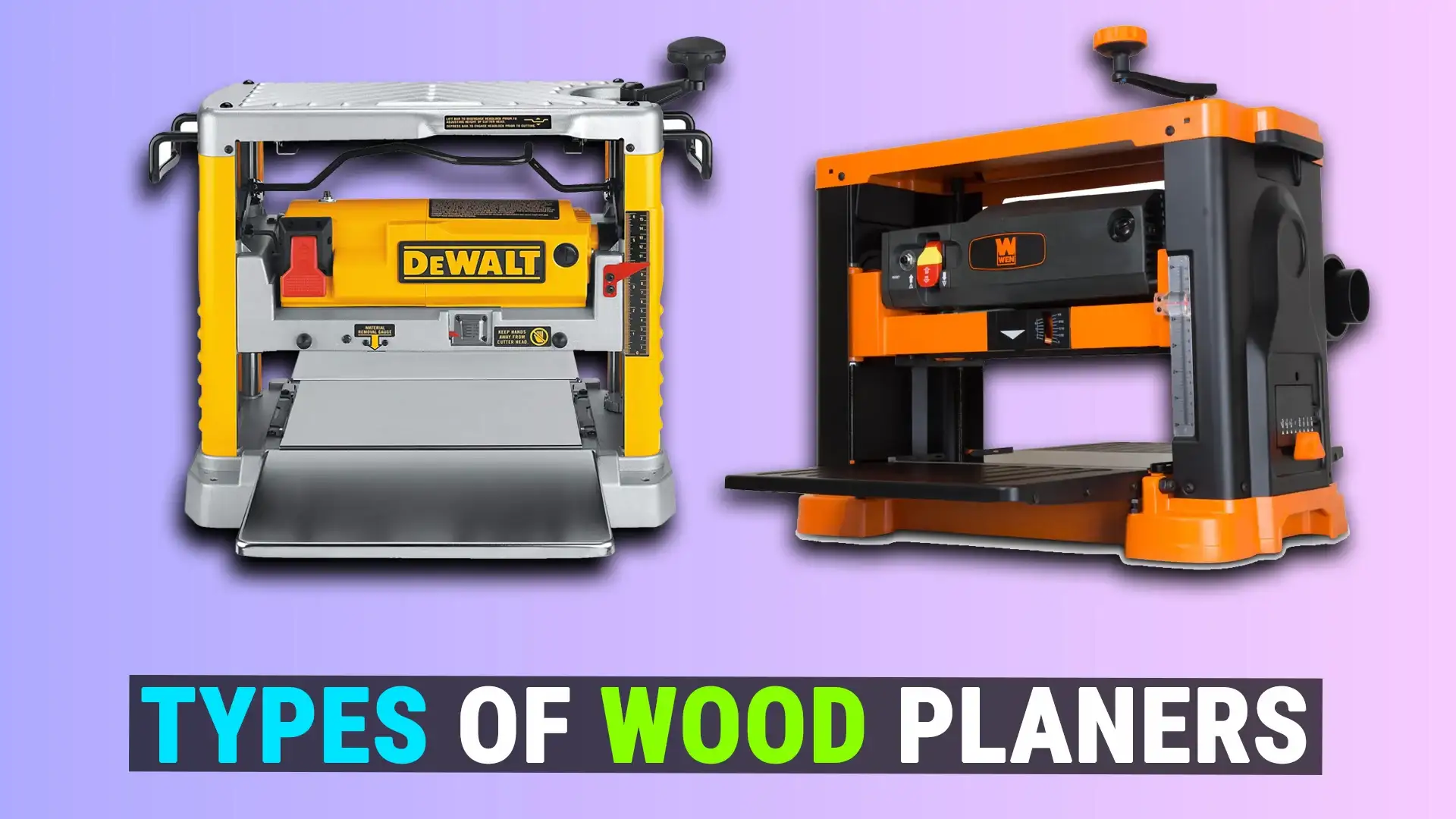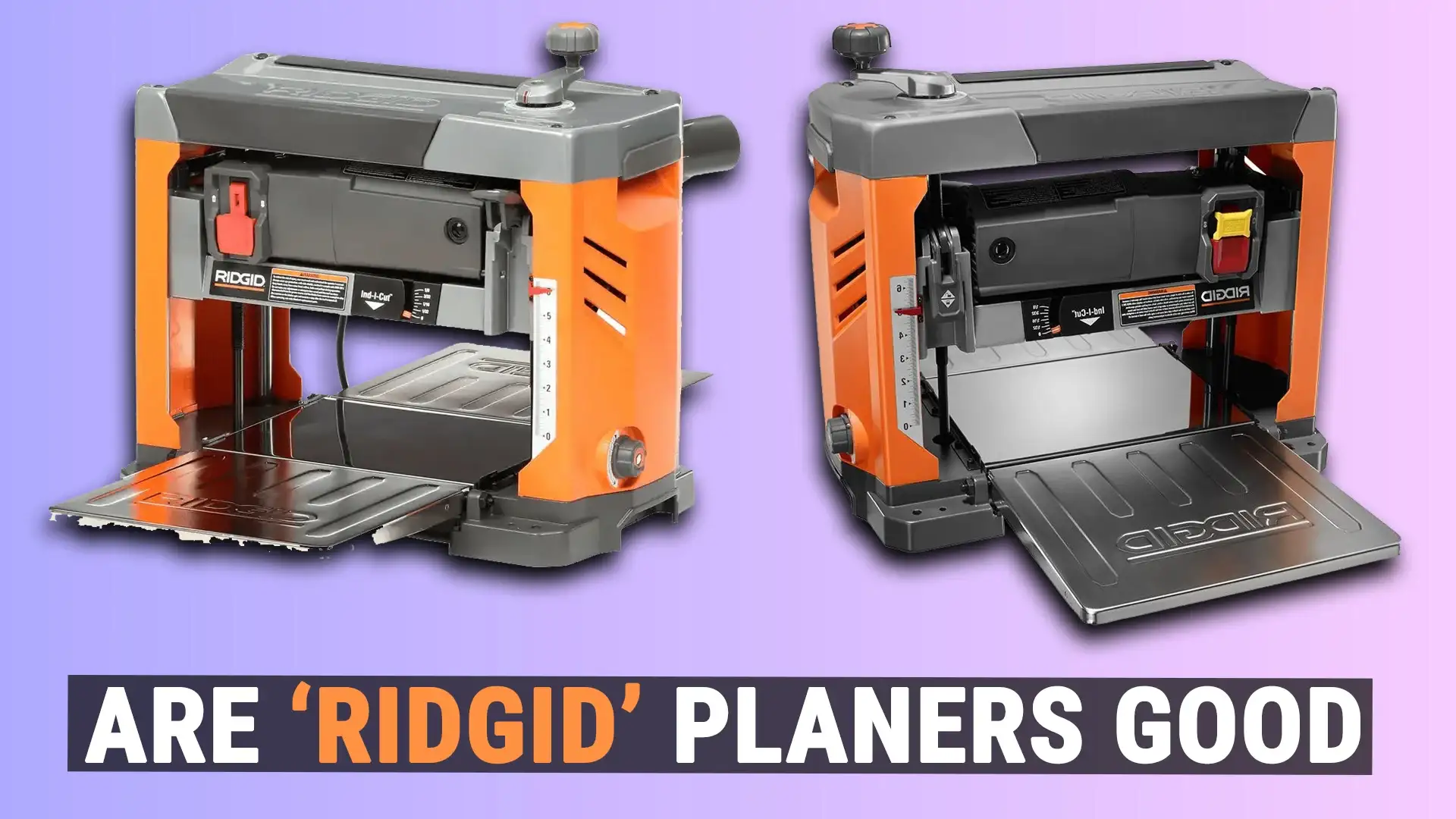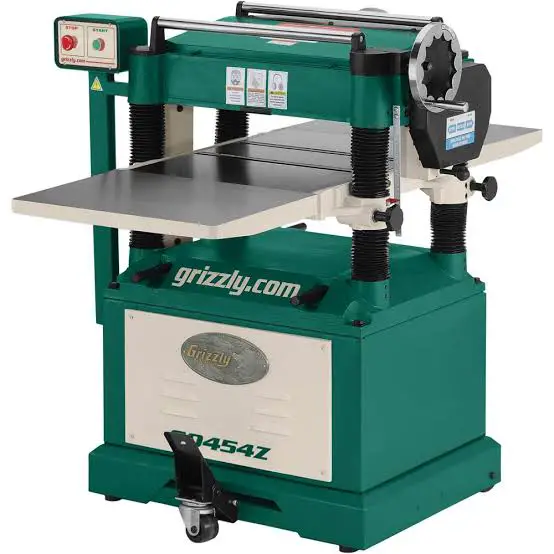Fixing The Common Craftsman Planer Problems [Easy Solutions]
Craftsman planers are a great tool for woodworkers, but they can also be frustrating when something goes wrong.
Common craftsman planer problems can range from minor annoyances to major repairs.
But don’t worry; with the right know-how and the right tools, you can easily fix most issues yourself.
In this article, we’ll discuss the most common craftsman planer problems and how to fix them quickly and easily.
We’ll show you how to troubleshoot common issues like clogged belts, jammed blades, and more so that you can get back to crafting beautiful pieces of woodwork again soon!
Common Malfunctions
The most common issue is uneven cutting depth, which is usually caused by loose screws or an improperly set blade.
To solve this, check all screws to make sure they’re tightly secured and adjust the blade according to the manufacturer’s specifications.
Another frequent problem is clogging of the dust chute or a dull blade.
If this occurs, simply clean out the chute and sharpen or replace the blades as necessary.
Finally, if you experience difficulty feeding wood into the machine, try using wax on your feed rollers—this should help reduce friction and allow for smoother operation.
These are just a few of the most common issues you may face when dealing with a craftsman planer—but with some basic maintenance and troubleshooting skills, any problems you encounter can usually be solved in no time!
Identifying And Troubleshooting Issues
Now that you know the common malfunctions of a Craftsman planer, it’s time to identify and troubleshoot any issues.
Replacing a dull blade will help your planer run more efficiently and keep your work pieces looking their best.
If the blades are rusty, clean them with steel wool and lubricate them with oil before using again.
Following these steps should help you identify and troubleshoot any issues with your Craftsman planer quickly and easily.
Clogged Blades And Feed Rollers
When you’re using a planer, it can be incredibly frustrating when the blades and feed rollers become clogged.
It’s like putting on the brakes in a race car; suddenly, what was once smooth and effortless becomes slow and jerky.
Fortunately, there are steps you can take to avoid this common problem:
By taking these simple precautions, you can ensure that your planer runs smoothly and efficiently even when working with challenging materials.
Adjusting The Table Height And Slope
Having discussed clogged blades and feed rollers, let’s move on to adjusting the table height and slope.
To adjust the table height, you’ll need an adjustable wrench.
Loosen the locking knob on the left side of the planer, then turn the adjustment wheel in a clockwise direction to raise it or counterclockwise to lower it.
The wheel should be turned until it stops; if you adjust beyond this point, you risk damaging your tool.
To adjust the slope, use a hex key to loosen two screws on either side of the planer.
You can then move the table up or down depending on how much tilt you want.
Be sure not to over-tighten the screws when done; they should be snug but not overly tight.
With these adjustments complete, your planer will be ready for use!
Replacing Worn Or Damaged Parts
Ah, the joys of being a craftsman!
Nothing quite compares to the feeling of satisfaction that comes with fixing common planer problems with worn or damaged parts.
Well, here’s a list of tips to help you out:
It’s important to be diligent with regular maintenance and routine checkups so you can catch any potential issues before they become more serious problems down the road.
Taking the necessary steps now will ensure that your planer runs smoothly in the future and keeps your projects coming out looking their best!
Lubricating The Planer
Now that the worn or damaged parts have been replaced, it’s time to lubricate the planer.
Lubrication prevents friction and wear when using the planer, and helps keep it in good working order.
Be sure to use only manufacturer-recommended lubricants for your particular model of planer.
Start by ensuring the planer is turned off and unplugged from any power source.
Remove all debris from around the blades and table, so you can clearly see where to apply the lubricant.
Now check to see if any parts need additional lubrication beyond what can be applied with a cloth or brush.
If so, apply it according to directions for your particular model.
Finally, make sure all surfaces are clean and free of grease before turning on the planer again.
With proper maintenance, your planer should work well for years to come.
Cleaning, Inspecting And Maintaining The Planer
Caring for a planer is like caring for an old friend; it requires attention and regular maintenance.
The blades need to be sharpened, the rollers need to be checked and cleaned, and the tension must be adjusted.
Here’s how:
Cleaning:
Inspection:
Maintenance:
With regular cleaning, inspection, and maintenance,, your planer will give you years of reliable service!
Professional Assistance
If the problem with your Craftsman planer still persists, it may be time to contact a professional for assistance.
Professional repair services may be able to provide more comprehensive repairs than can be done on your own.
They can identify and diagnose the issue more accurately, as well as replace any necessary parts or components.
Many repair services offer warranties on their services, so you can have peace of mind that your planer is in good hands.
It’s important to research different professional repair services before deciding which one to use.
Read online reviews and ask friends or family if they have any recommendations.
Doing your due diligence will ensure that you get the best service possible for your Craftsman planer repairs.
Conclusion
In conclusion, the Craftsman planer is an indispensable tool in any serious woodworker’s arsenal.
With a few simple steps and quick fixes, you can keep your planer running as smoothly as when it first rolled off the assembly line.
Not only will regular maintenance save you time and money, but it will also ensure that your planer continues to run like a dream for years to come.
I can’t emphasize enough just how vital it is to properly care for your planer – the difference between smooth-as-silk operation and complete breakdown could be a matter of minutes!
So if you want your planer working at peak performance, make sure to keep up with all its regular maintenance needs.
You’ll be glad you did!
Finally, if all else fails, don’t be afraid to call in the professionals – they can help diagnose and repair any issue you may have with your Craftsman planer.
All in all, a well maintained and properly functioning planer is worth its weight in gold – so make sure to take good care of yours!



